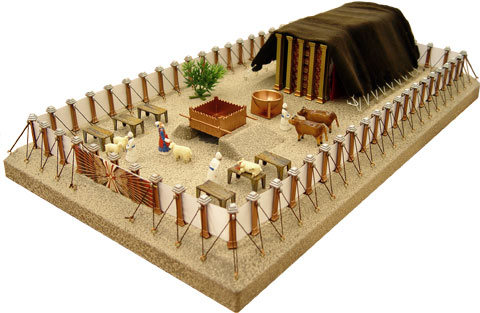Continuity of the Old
We can see that there was a continuity between the old and the new. Acorns turn into oak trees, not into cats! In the same way there is a continuity between the old creation and the new creation. John demonstrates this as he recognises the New Jerusalem, the heavenly city, although as we shall see in a moment, it looks rather different to the city that John knew!
The New Jerusalem is where God's dwelling will be with people. The word used for dwelling links back to the word used for tabernacle in the Old Testament, and is also the same used in John's gospel, when we read that the word became flesh and dwelt among us.
It is also a place that is very physical. We shouldn't imagine that it will be all floating about on clouds, plucking harps and singing hymns. This is very earthy - a new heaven and a new earth.
What the new city is like
We see that the source of the city is God himself - he has created it. It has a high wall around it which reminds us of the security and protection that it offers to God's people. It is marked with the names of the Twelve tribes of Israel, and the Twelve apostles, showing that this is the home for all the people of God, whether ethnically Israel or not, who trust in Jesus by faith.
We notice that the dimensions of the city are another clue in numbers. Twelve thousand stadia can be broken down into 12, the number of the people of God, multiplied by 1,000, which is the cube of 10. The number ten usually signifies completeness in John, so the number 1,000 is that completeness intensified. John intends us to realise that the city is large enough to hold the complete totality of God's people in every age.
The description of the city as a cube is also highly significant. It is a perfect cube, and there are only three references in the Bible to perfect cubes. The final one is here in Revelation 21. The first reference is in Exodus, with the description of the dimensions of the Most Holy Place in the tabernacle. The second reference is in 1 Kings 6, with the description of the Most Holy Place in the Temple. The Most Holy Place could traditionally only be entered by the High Priest on one day each year, the Day of Atonement. But now the dwelling place of God is with the people!
Similarly, the Jews regarded holiness in a similar way to which we would regard radioactive material. It was highly dangerous, so only trained people (the priests) could handle it, and they needed special protective clothing to do so. What is interesting about the jewels mentioned in verses 19-20 (some of which we have to guess at their contemporary equivalents!) is that they are exactly the same jewels that decorated the robes of the High Priest described in Exodus 28. The Most Holy Place, where God himself dwells, is now open to all his people, who will live with him day by day.
What's Missing?
Finally John tells us what isn't in the city. There's no temple, which makes perfect sense in the light of the above connections. There's no sun, moon or lamps - why would anyone need reflected or artificial light, when the glory of God is there?
There's no night, no darkness at all. There is no need for the city gates to be shut at nightfall, and God's people need no more protection from evil. And there will be nothing impure. Impurity cannot co-exist with the pure presence of God, so it will all be blown away.
Who's it for?
As we saw in Revelation 20, this city is prepared for all those whose names are in the Lamb's book of life. Those who don't trust in their deeds to get them to this wonderful place, but those who have trusted in the deeds of the Lamb of God, Jesus himself, who was slain for the rescue of all those who will accept this free, unearned, gift of amazing life.



No comments:
Post a Comment